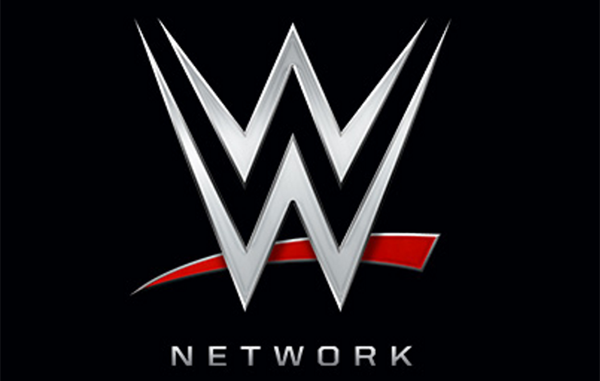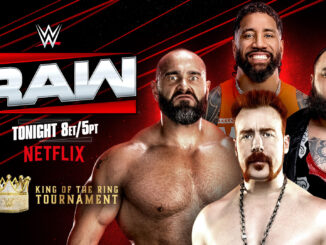
SPOTLIGHTED PODCAST ALERT (YOUR ARTICLE BEGINS A FEW INCHES DOWN)...
WWE revenues in Q1 this year landed at $182.4, down from $187.7 last year. WWE Network “paid subscribers” increased 2 percent to 1.58 million. Revenue was up less than one-half of one percent, though, so that 2 percent increase in subscribers is a heavily discounted group.
The top bragging points were tied to digital views being up 15 percent and hours consumed increased 23 percent to 300 million hours, which is in part a result of WrestleMania’s length. They touted that WWE Network subscriptions “reached 2 million” the day after WrestleMania, presumably including free trials since it didn’t specify it was paying customers.
“WWE Network subscribers viewed 23.2 million hours during WrestleMania week, which was roughly on par with the same week last year,” WWE stated in the press release. Any reduction in the length of WrestleMania – which according to our fan feedback and polling was hugely unpopular with Network viewers and a negative live experience for many fans, especially families with younger kids – would have taken away the bragging point that total hours viewed was on par with last week.
In fact, of the five “First Quarter 2019 Highlights,” three were drops (revenues were down $5.3 million, adjusted OIBDA was down “primarily due to strategic investments,” and operating income was a loss of $6.8 million compared to income of $21.8 million last year), one was basically flat (a 2 percent increase in WWE Network, with no “granular detail” breaking down how many paid subscribers were paying a deep discount that WWE offers lapsed subscribers to return, often as low as 33 cents per month for three months), and the fifth had negligible impact on revenue (digital video views are low revenue, social media followers produce no direct revenue, and hours consumed produces no revenue since subscribers pay a flat fee).
While media revenue was up, ticket revenue and merchandise revenue was down. The categories that indicate actual fan interest in the product, rather than just being paid more for fewer viewers and less interest (i.e. Saudi Arabia, new TV deals), were down. Fewer fans have been going to live events and fewer have been buying merchandise.
Vince McMahon explained that this was due to so many injured wrestlers, and they pointed toward their excitement over the perks of the new Fox deal starting this coming October.
“While engagement metrics over the past two quarters were impacted by Superstar absences, we believe they will improve as our talent return and we launch our new season following a successful WrestleMania,” he said in the press release. “We remain excited about the future, particularly with our debut on Fox in October.”
In the conference call, Vince said they had 15 main event and mid-card talent with injuries. He said without talent, they don’t have storylines.
They explained further in their press release: “During the fourth quarter 2018 earnings call, WWE management discussed the absence of several talent and their belief that these absences had a negative impact on the Company’s engagement metrics. Management believes that these absences continued to impact engagement in the first quarter 2019 as domestic TV ratings for Raw and SmackDown declined approximately 14% and 13%, respectively, and average attendance at the Company’s live events in North America declined 11%.”
Roman Reigns was the primary wrestler missing from house show line-ups in Q1, with Becky Lynch selling an injury angle and appearing but not wrestling at some shows and Braun Strowman missing some dates. They didn’t specify the injuries that caused a drop-off in viewership, but other than Mustafa Ali, injuries were largely short-term and didn’t interrupt major storylines or house show line-ups (and house show tickets are largely sold ahead of time, and often on vague lists of talent with cards subject to change).
Kevin Owens, Sami Zayn, Luke Harper, and Bray Wyatt were also out of action in Q1, although those hiatuses preceded Q1 by months and other than Owens, none were significant contributors to top-half storylines recently.
Their revenue keeps them on “path to record full-year performance,” but the metrics indicative of actual fan interest and not business-side changes in revenue disconnected from customer enthusiasm are down. Vince expressed optimism of a “new beginning” thank to new writers being added to the team and the increased promotional push they’ll get from the Fox deal this fall. He forecast live event attendance will be on upward trend. There was no follow-up on his prior comments months ago about reimagining house shows to help increase attendance when it was slumping late in 2018.
WWE also said relative to other live sports programming, only the NFL drew more average viewers per event other than NASCAR’s one-off “Daytona 500.” They wrote: “(M)anagement believes relative performance is critically important as it illuminates the value of WWE within the pay TV ecosystem. In the first quarter, when excluding NASCAR’s premier event, The Daytona 500, WWE delivered greater average viewership than any professional sports league other than the NFL.”
WWE did mention a studio show scheduled for Fox Sports 1 starting in October and touted the A&E biography specials on five WWE “legends.”
READ THE FULL Q1 PRESS RELEASE HERE.
READ PROWRESTLING.NET’S SUMMARY OF THE CONFERENCE CALL HERE: 4/25 WWE Conference Call notes: Vince McMahon, Michelle Wilson, and George Barrios host the first quarter conference call




Leave a Reply
You must be logged in to post a comment.